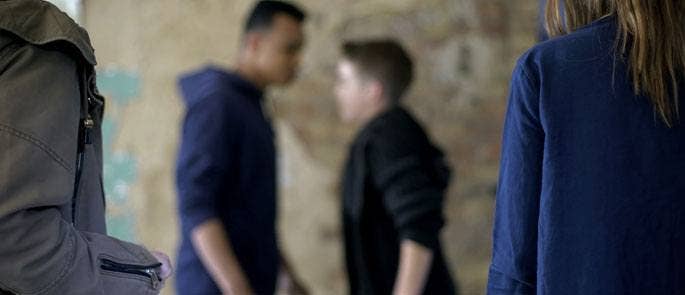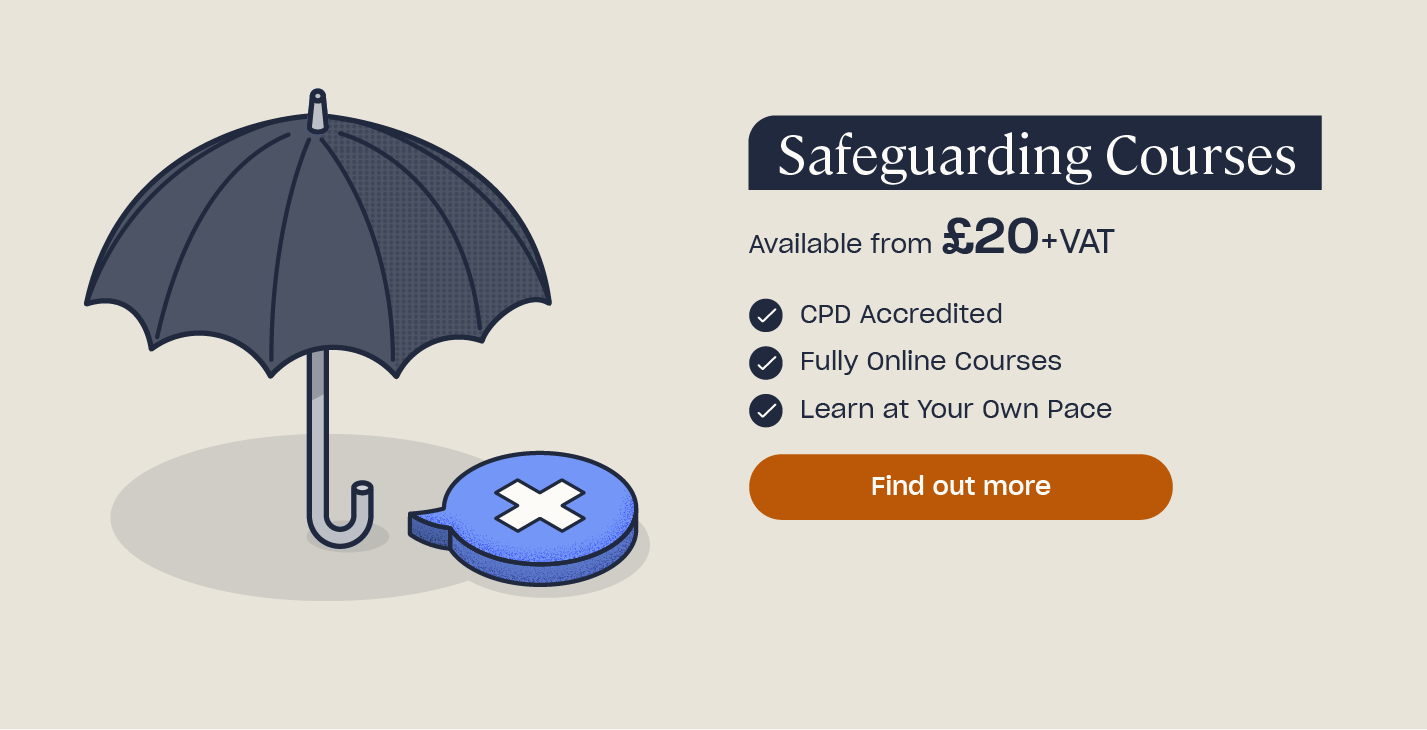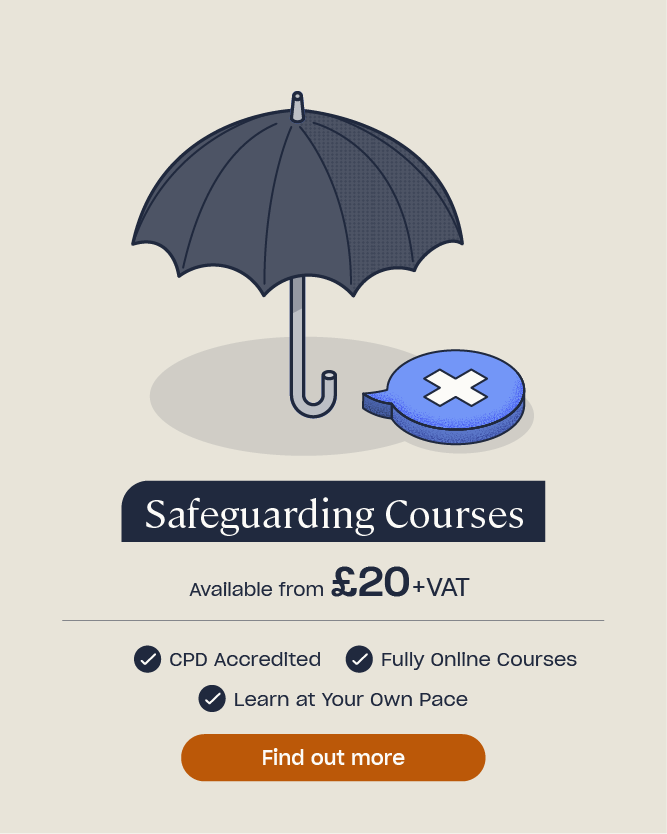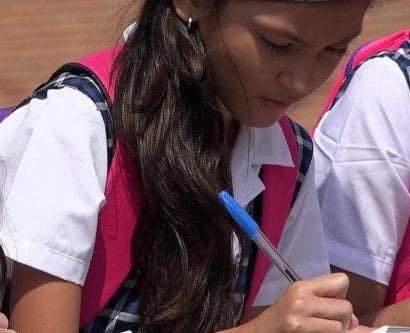What You Need to Know About Youth Violence
Everyone who works with children has a responsibility to keep them safe in that environment. However, the risks that children are subjected to are not limited to the environments in which you may be engaging with them. Youth violence is an issue that impacts children and young people in school, at home, in their local communities and online. It is a serious issue that poses a substantial risk to a child’s wellbeing and safety and it can have lifelong consequences. All those who work with children and young people should understand the importance of youth violence and how it might manifest in their setting. In this article we will explain what youth violence is, explore some of the causes and different types of youth violence and outline the role you can play in reducing or preventing youth violence in your setting.
What is Youth Violence?
The World Health Organisation (WHO) defines youth violence as violence that occurs among individuals aged 10 – 29 years old. It generally takes place outside of the home and it can range from acts of bullying, cyberbullying and fighting, to more severe acts such as sexual and physical violence, gang-related violence or homicide. The Department for Education (DfE) defines ‘serious youth violence’ (SYV) as interpersonal harm through homicide, serious violent assault and/or robbery where the victim(s) and perpetrator(s) are young people. In the context of SYV ‘children’ refers to those aged 5 – 18, whilst ‘young people’ refers to those aged 18 – 25. Whilst there are some differences in the ages, both definitions recognise youth violence as interpersonal harm that occurs between young people; the terms youth violence and SYV will be used interchangeably throughout this article.

In 2024 the government published a report that highlighted that serious youth violence was a more severe problem than many adults realised. The report noted that youth violence was not just a ‘city problem’ and that children as young as 11 were carrying knives for ‘protection.’ In 2024 the Youth Endowment Fund (YEF), a charity that seeks to prevent children and young people from becoming involved in violence, published their third annual Children, Violence and Vulnerability report. The YEF surveyed over 10,000 children aged 13 – 17 in England and Wales about their experiences with violence and found that:
- 20% of respondents had been a victim of violence
- 65% of that group reported violence happening multiple times within the year
- 61% of those incidents led to physical injury
- 14% of respondents had been a perpetrator of violence
- 9% of respondents had been subjected to physical assault
- 5% of respondents had experienced being threatened or attacked with a weapon
- 31% of victims of violence were attacked by a friend
- 41% of victims of violence were attacked by an acquaintance
- 74% of Black respondents expressed concern about becoming victims of youth violence
- 52% of respondents reported changing their behaviour out of fear of youth violence
Causes of Youth Violence
Youth violence is a serious and widespread issue. It can be caused and exacerbated by a myriad of different factors ranging from peer pressure to systemic racism. The causes of youth violence must be addressed at local and national levels. However, there are many causes of youth violence that are undeniably outside of the control of those responsible for safeguarding children. For example, in 2023/4 children from Black Caribbean backgrounds were 228% more likely to be arrested than expected based on their share of the population. The overrepresentation of Black children in the youth justice system highlights racial disparity which can increase a child’s likelihood of becoming involved with youth violence. However, a teacher is not in a position to address or challenge the racial disparity of the youth justice system. In this instance, this cause is outside of their control and influence. That being said, causes of youth violence can be multifaceted and you must be aware of the potential causes of youth violence and how it may disproportionately impact the different children you engage with.
Below you will find some causes of youth violence. This list is by no means exhaustive and each cause of youth violence can be extensively explored for its impact in its own right. Nevertheless, it’s important for those with a responsibility for safeguarding children to have an awareness of the variety of causes. Causes of youth violence include:
- Poverty
- School exclusion
- Lack of youth services
- Social inequality
- Racism
- Systemic racism
- Bullying/cyberbully
- Poor mental health
- Exposure to violence in the family
- Exposure to violent content
- Peer pressure
- Poor parental supervision
- Parental/familial criminality
- Misuse of drugs and/or alcohol

As mentioned, some children are disproportionately impacted by the causes of youth violence and this can make them more susceptible to engage in it. It’s equally important for those with a responsibility to safeguard children to recognise the factors that can put a young person at greater risk of becoming involved with youth violence. Risks that can increase a child’s likelihood of getting involved with youth violence include:
- Exposure to crime
- Behavioural problems
- Low commitment to school
- Poor social skills
- Anti-social behaviour and previous offending
- Low self-esteem
- Unstable home environment
- History of abuse
- Socioeconomic deprivation
- Special educational needs
- Ethnicity
Want to Learn More?
All children have the right to safety and those with safeguarding responsibilities must uphold their duty and engage in effective practices in order to keep people safe. Our wide range of Safeguarding Courses will provide you with the necessary knowledge and skills to maintain your safeguarding responsibilities.
Types of Youth Violence
Youth violence demonstrates that young people are not exempt from violent crime simply because of their age. This can be seen in the types of violence that a young person may become involved with that can be just as severe as the violence that someone much older might engage in. There are also certain crimes that are unique to youth violence as they rely on an individual’s age to avoid detection. It’s important to have an understanding of the type of criminal activity that a young person may be engaging with and to not assume that a child is ‘too young’ to perform such actions.

Examples of youth violence include:
- Knife crime
- Physical assault, sexual assault and rape
- Homicide
- Gang violence
- Drug dealing/transportation (County Lines)
- Sexual exploitation
- Blackmail
Gang Violence
Youth violence is synonymous with gang violence. 46,000 children in England are thought to be involved in criminal groups, but it’s highly likely that the number is much greater. It’s not illegal for a young person to be in a gang and not every gang is linked to criminal activity, however, gang membership can quickly become linked to criminal activity. Street gangs and organised criminal groups often see crime and violence as integral to the gang’s identity or crime as their ‘occupation.’ This means that those involved with these types of gangs are highly likely to become involved in some kind of illegal activity. Young people can be drawn into gangs for a wide range of reasons including:
- Peer pressure
- A desire to feel respected
- Protection
- A desire for money and other rewards
- To gain status
- School exclusion resulting in a lack of direction
Some gangs will intentionally seek out children and young people and groom them in order to make recruiting easier. These gangs will often target children as they are less suspicious and tend to be given lighter sentences than adults.
Studies show that a child is at greater risk of being recruited into a gang if they:
- Have been excluded from school
- Have special educational needs
- Are being subjected to abuse at home
- Have mental health problems
- Live in existing gang territory

If you are worried that a child or young person is being groomed or coerced into joining a gang you can contact the NSPCC Helpine on 0808 800 5000 or email help@NSPCC.org.uk
Signs of Youth Violence
It’s important that you are able to recognise the signs that a child or young person may be involved with youth violence. This enables you to monitor the child, offer support and take the necessary action. Signs that a child or young person might be involved with youth violence include:
- Displaying aggressive or violent behaviour
- Unexplained absences
- Unexplained money, clothes or designer wear
- Having multiple phones
- Getting lots of phone calls or texts
- Use and/or possession of drugs and/or alcohol
- Unexplained injuries
- Abandoning friends and social circles
- A decrease in academic performance
- Significant emotional changes
- Adopting new language/terminology
- New peer groups and/or relationships
This list is not exhaustive, nor does one sign automatically indicate that someone is involved in violent activity. However, it’s important for those with safeguarding responsibilities to have an awareness of what these signs might indicate.
How to Prevent Youth Violence
Just as the causes of youth violence must be addressed at both a local and national level, so too must attempts to prevent youth violence. Prevention of youth violence on a national scale involves action such as investing in communities, addressing systemic racism and tackling wealth inequality. This is undeniably outside of the control of some of those responsible for safeguarding children as they don’t necessarily have the power or authority to influence these factors. However, there are also effective steps that can be taken at a local level which are within the control of those with a duty of care.
The YEF has an evidence based toolkit that explores approaches that can help to reduce violence in the education sector. These include:
- Social skills training
- Cognitive Behavioural Therapy
- Relationship violence prevention lessons and activities
- After school programmes
- Anti-bullying programmes
- Mentoring
- Bystander interventions to prevent sexual assault
- Sports programmes
- Trauma-specific therapies
- Focused deterrence

Other ways in which youth violence can be prevented or reduced include:
- Contextual safeguarding – this is an approach to safeguarding that recognises that a young person may be at risk both inside and outside of the home environment. It enables staff to see the bigger picture and identify safeguarding concerns that might otherwise fly under the radar.
- Multi-agency working – this is when professionals from different organisations and sectors come together to safeguard and support children and young people at risk. Multi-agency working enables early identification of risk and subsequent coordinated action to support a child and help to keep them safe.
- Establishing trust – it’s vital that a child or young person has an adult they can turn to for advice, guidance and support. This figure isn’t always someone within their family and the YEF notes that 82% of teenage children have a trusted adult outside of their family. School staff are the most trusted and adults outside of the school setting such as sports coaches, mentors, doctors or youth workers are also figures young people will turn to. Facilitating these relationships can ensure that a child has an adult to turn to who will have their best interests at heart.
If you have any concerns that a child is involved with youth violence you should share these concerns with another member of staff such as the Designated Safeguarding Lead (DSL). They should then be able to advise you on the next steps to take.
If you suspect a child or young person is at risk of immediate danger you must call the police on 999.
You can also contact the following for further information and support:
Youth violence is a serious and widespread issue. It can be difficult to imagine a child being involved with criminal activity, however their age does not protect them from engaging with serious crime. Many children become involved with youth violence unwillingly and once they have become involved it can feel impossible to escape. Those with a responsibility for safeguarding children must ensure that they provide the support and guidance to educate children on the danger of youth violence and to highlight the alternative routes through life that they can take.











